Software Spotlight: Luckman's Official Interactive World Wide Web Yellow Pages
Luckman's Official Interactive World Wide Web Yellow Pages version 1.1 is a CD-ROM directory of top rated internet web sites from 1996. A CD-ROM directory might seem like a silly product today, but search engines were still new, browsing directories took time that would tie up the phone line using dial-up, and a box sold in a real store was much more trustworthy than some random internet list.

https://winworldpc.com/product/luckmans-official-interactive-www-yellow-pages
Regardless of its merits, the fact that it was published on physical media allows us to glance back in time at some of the early sites on the web.
The CD-ROM contains a database of almost 10,000 web sites that Luckman Interactive rated as the best. Each entry contains the URL, a brief description, a thumbnail screen shot, and ratings of speed, content, design, and flow. Sites are organized in to a number of categories. Content can be searched locally using the local software. Clicking on the site thumbnail will open a web browser to that URL.
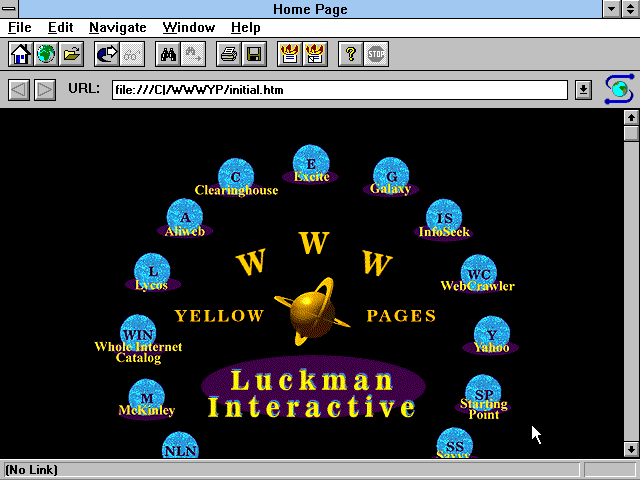
The CD also includes a copy of the "Super Mosaic" web browser. This is a Win32s Mosaic based browser that supports Windows 3.1, 95 and NT. It looks like it is tied to a copy of Trumpet Winsock that only supports dial-up.
The manual states that the Luckman's product also supports MacOS, but the box is labeled as Windows only, and this version of the CD seems to contain no Macintosh support.
As odd as it may seem, the content is stored as a series of Adobe Acrobat PDF files on the CD-ROM. At the time, Acrobat Reader provided a much richer visual experience than web browsers, and content could be stored in compact unified files.
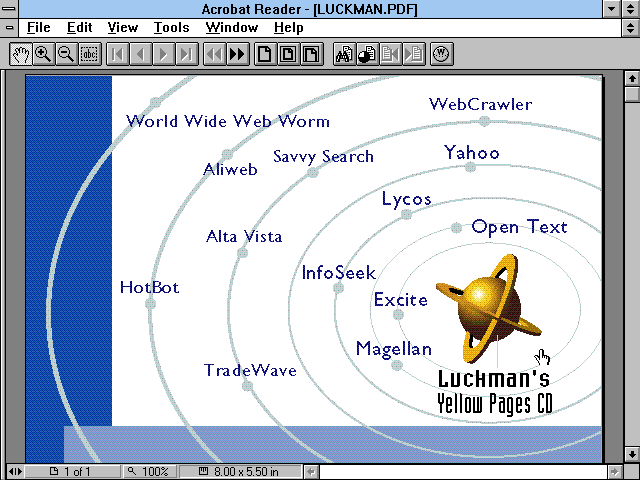
The very first "page" contains a list of web search engines and indexes with the Luckman's database sort of at the center.
It seems a little out of place to have the the database icon right in the middle of search engine links. Partly because everything else requires an internet connection, and partly because it seems like they are steering people away from their own product.
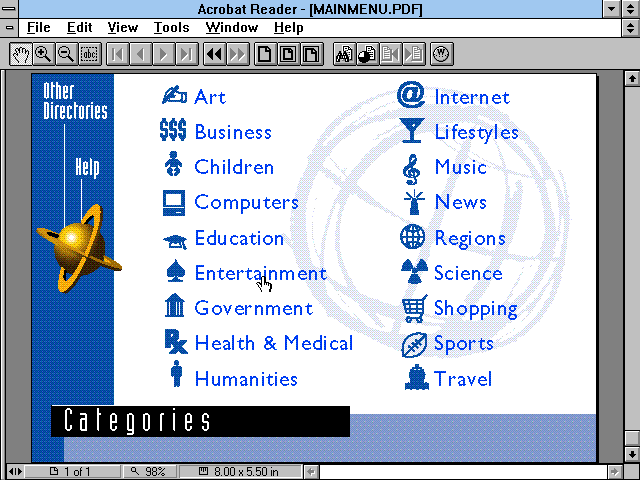
The categories are very general interest, designed to appeal to a wide range of non-technical people. Categories have sub-categories, and many sites appear in multiple categories.
Compared to how people find sites today through search engines, a directory may seem very indirect and cumbersome. However it does let people explore options they otherwise might not consider.
When this CD was created, people were still getting used to and exploring the idea of "surfing" the web, endless jumps from one site to another. There were even contests on how get from one arbitrary site to another totally unrelated arbitrary site with the fewest clicks. In contrast, these days people just get alerts fed to them, or search a keyword then open a page and almost immediately close it.
A big problem with a directory like this is which sites to include, and why. Luckman's boasts that they reviewed some 100,000 sites for this CD. Due to the size of each "page", less than 10,000 are on the CD. The impression I get is they tried to be fairly unbiased, while focusing on general interest sites. However, in a modern market, search engines/directories are paid to send users to sites that they may not really want, or even omit competing sites.
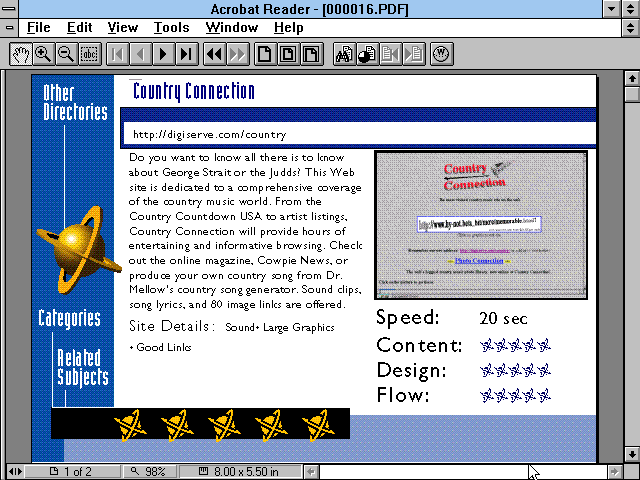
Each review page contains a URL link, a short description of the site, various rankings, and a thumbnail of the site's main page. Clicking the thumbnail opens a browser to that URL.
Disappointingly, that is about it. Not much more to this CD.
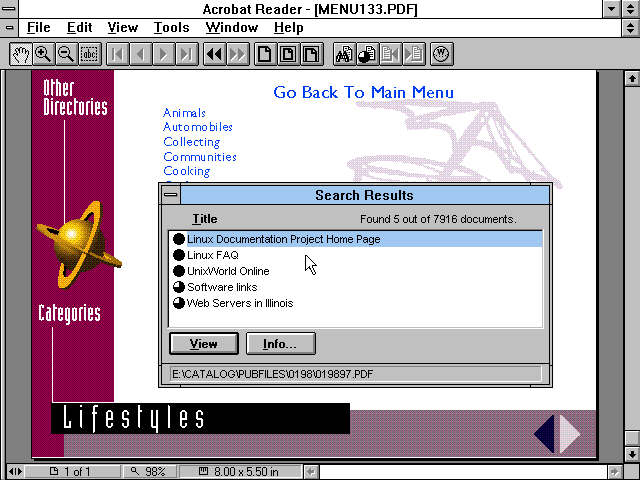
It is possible to search the database by keywords. Not a lot to see, but at least not a trillion word salad spam sites.
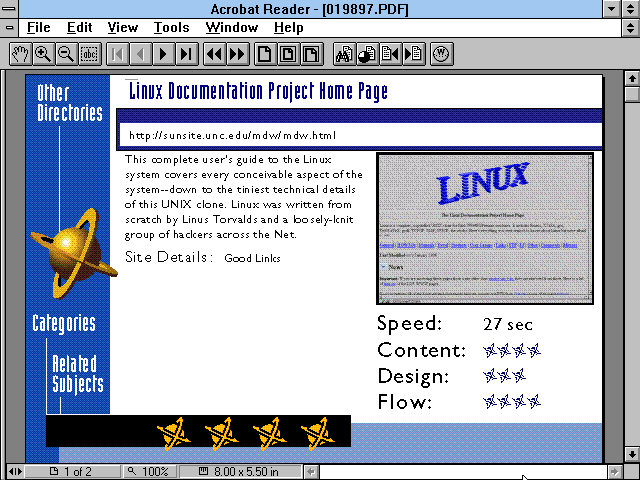
So what sites are interesting? A lot of the listed sites are long gone, and probably not the sort of thing most people would even remember. There are a few mentions of Linux.
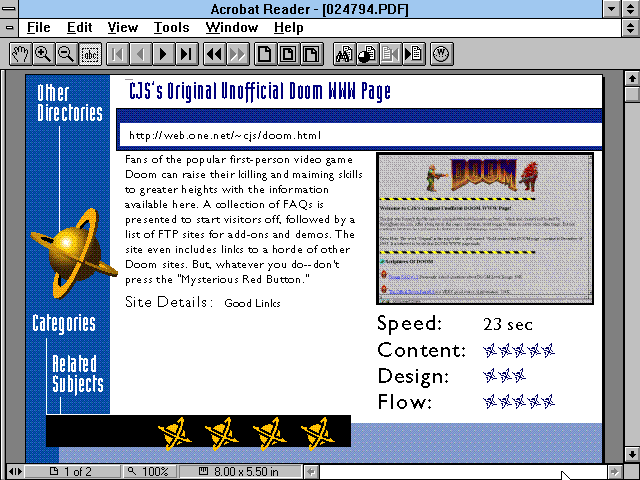
Of course there is a site about DOOM.
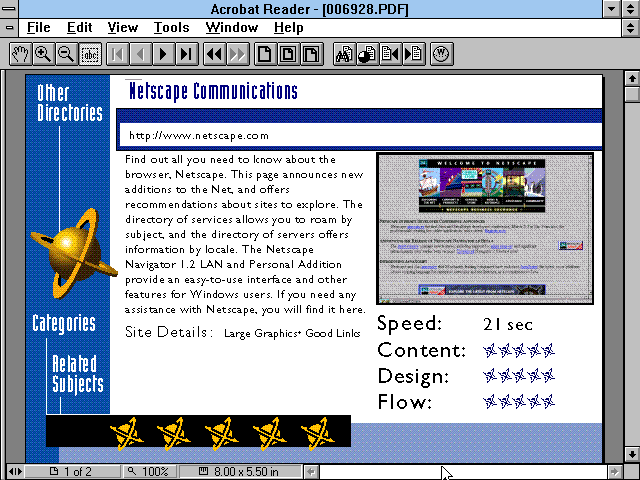
The early Netscape web site. There are also some very early archives at
http://mcom.com/
and
http://home.mcom.com/
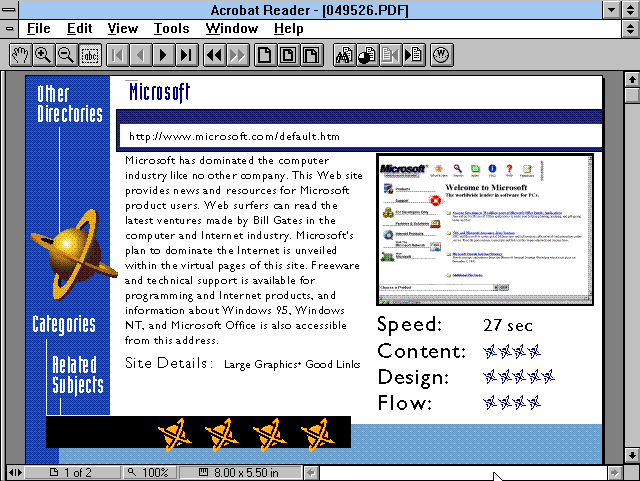
It's the home page of our good friend Bill Gates.
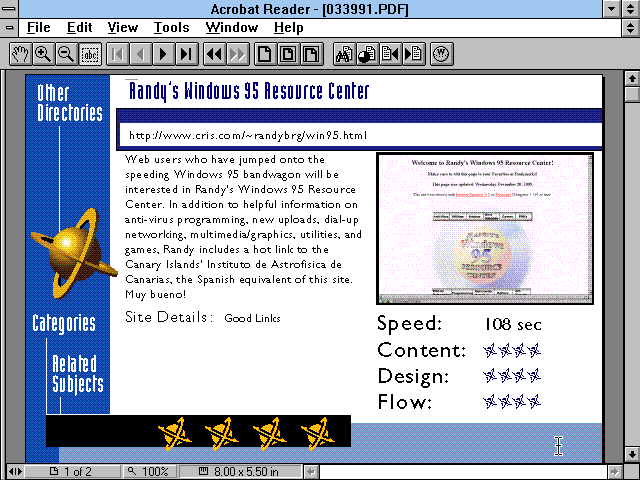
The database lists a number of shareware and support sites.
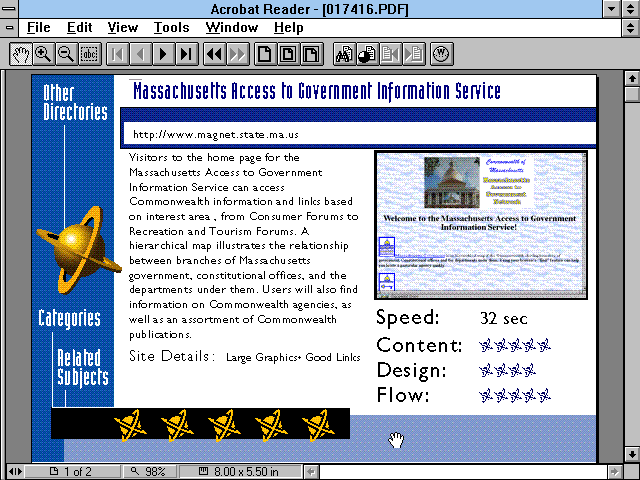
Luckman's does not point to every single site that was out there. In many cases, they instead point to an organization's index or portal, which would lead to smaller sites. For example, I am aware of one specific local government agency that had a web site back then. It is indirectly mentioned in this database, pointing instead to a statewide government portal.
So, a little gimps in to the early web, back when people put actual information on the web. Back before the web was more than just Twatter and Facefook, and back before the web revolved around selling cell phones.

https://winworldpc.com/product/luckmans-official-interactive-www-yellow-pages
Regardless of its merits, the fact that it was published on physical media allows us to glance back in time at some of the early sites on the web.
The CD-ROM contains a database of almost 10,000 web sites that Luckman Interactive rated as the best. Each entry contains the URL, a brief description, a thumbnail screen shot, and ratings of speed, content, design, and flow. Sites are organized in to a number of categories. Content can be searched locally using the local software. Clicking on the site thumbnail will open a web browser to that URL.

The CD also includes a copy of the "Super Mosaic" web browser. This is a Win32s Mosaic based browser that supports Windows 3.1, 95 and NT. It looks like it is tied to a copy of Trumpet Winsock that only supports dial-up.
The manual states that the Luckman's product also supports MacOS, but the box is labeled as Windows only, and this version of the CD seems to contain no Macintosh support.
As odd as it may seem, the content is stored as a series of Adobe Acrobat PDF files on the CD-ROM. At the time, Acrobat Reader provided a much richer visual experience than web browsers, and content could be stored in compact unified files.

The very first "page" contains a list of web search engines and indexes with the Luckman's database sort of at the center.
It seems a little out of place to have the the database icon right in the middle of search engine links. Partly because everything else requires an internet connection, and partly because it seems like they are steering people away from their own product.

The categories are very general interest, designed to appeal to a wide range of non-technical people. Categories have sub-categories, and many sites appear in multiple categories.
Compared to how people find sites today through search engines, a directory may seem very indirect and cumbersome. However it does let people explore options they otherwise might not consider.
When this CD was created, people were still getting used to and exploring the idea of "surfing" the web, endless jumps from one site to another. There were even contests on how get from one arbitrary site to another totally unrelated arbitrary site with the fewest clicks. In contrast, these days people just get alerts fed to them, or search a keyword then open a page and almost immediately close it.
A big problem with a directory like this is which sites to include, and why. Luckman's boasts that they reviewed some 100,000 sites for this CD. Due to the size of each "page", less than 10,000 are on the CD. The impression I get is they tried to be fairly unbiased, while focusing on general interest sites. However, in a modern market, search engines/directories are paid to send users to sites that they may not really want, or even omit competing sites.

Each review page contains a URL link, a short description of the site, various rankings, and a thumbnail of the site's main page. Clicking the thumbnail opens a browser to that URL.
Disappointingly, that is about it. Not much more to this CD.

It is possible to search the database by keywords. Not a lot to see, but at least not a trillion word salad spam sites.

So what sites are interesting? A lot of the listed sites are long gone, and probably not the sort of thing most people would even remember. There are a few mentions of Linux.

Of course there is a site about DOOM.

The early Netscape web site. There are also some very early archives at
http://mcom.com/
and
http://home.mcom.com/

It's the home page of our good friend Bill Gates.

The database lists a number of shareware and support sites.

Luckman's does not point to every single site that was out there. In many cases, they instead point to an organization's index or portal, which would lead to smaller sites. For example, I am aware of one specific local government agency that had a web site back then. It is indirectly mentioned in this database, pointing instead to a statewide government portal.
So, a little gimps in to the early web, back when people put actual information on the web. Back before the web was more than just Twatter and Facefook, and back before the web revolved around selling cell phones.

Comments
Wait...
(Disclaimer: I worked at Digital, Compaq, HP, and Rockwell Collins :P)
e.g. this one is from 2001.
No need to have Mac internet connectivity software bundled on CD; Apple starting including that with Mac OS 7.5 which would have been about 2 years old when this CD was released.